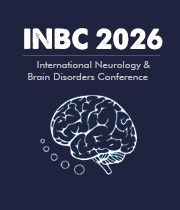Cerebral Cortex
The cerebral cortex is the outermost layer of the brain, consisting of around 50 to 100 billion neurons organised into two distinct hemispheres. It is one of the most complex organs in the human body, and is responsible for many of our higher-level functions such as language, memory, motor control, and sensory perception. The cerebral cortex is responsible for coordinating the actions of the various structures of the brain, and for providing a structure for the integration of higher functions. The cortex is comprised of six distinct layers, each playing an important role in processing information. The uppermost layer is the cortex proper, a two-layer structure made up of grey matter neurons that receive input from other areas of the brain. Neurons in the cortex are organised into columns, clusters of cells responsible for specific functions. The neurons then transmit electrical signals to other neurons through axonal and dendritic connections. The second layer of the cortex is the white matter, made up of myelinated axons connecting the various parts of the cortex and projecting from one area to another. The white matter is responsible for conveying information between neurons, forming the basis of neural networks. The third layer is the basal ganglia, which acts as a processing centre for motor control and contains clusters of neurons that coordinate movement. Other structures associated with the cerebral cortex include the hippocampus, which is responsible for memory formation, and the amygdala, which is responsible for emotional expression. The cortex is highly interconnected and the intelligence of humans is due to the complexity of its networks. It consists of a massive synaptic network that is able to combine various inputs and generate complex behaviours, from basic reflexes to higher-level abstract thought. It has been estimated that the number of connections that can be formed in the cortex is 10^15, more than the number of stars in the Milky Way. The cortical is thus a fascinating organ and a central component of the central nervous system. Through it we acquire a higher-level of intelligence, processing data almost instantaneously and allowing us to make complex assessments of our environment. It is vital to our existence and without it, humans wouldn’t exist as they are today.

Joe Sam Robinson
Mercer University, United States
Robert B Slocum
University of Kentucky HealthCare, United States
George Diaz
Memorial Healthcare Systems, United States
Daniel Curry
Texas Children’s Hospital, United States
Zhenhuan Liu
Guangzhou University Chinese Medicine, China
Kiran Ghotra
Lake Erie College of Osteopathic Medicine, United States




Title : Atypical presentation of Juvenile myoclonic epilepsy in a 16-year-old female: A Case Report
George Diaz, Memorial Healthcare Systems, United States
Title : What we don’t know about hydrocephalus and It’s management
Daniel Curry, Texas Children’s Hospital, United States
Title : Artificial intelligence-driven DWI and FLAIR for the detection of early stroke changes: A systematic review
Shari L Guerra, The Medical City, Philippines
Title : Mapping neuroplasticity in occupational therapy: Evidence-based interventions with measurable neural outcomes
Jessica Marchant, Texas Woman's University, United States
Title : Non-pharmacologic management of orthostatic hypotension in inpatient rehabilitation: A quality improvement initiative
Laura Steakin, Rehabilitation Institute at Sinai, United States
Title : Non-pharmacologic management of orthostatic hypotension in inpatient rehabilitation: A quality improvement initiative
Mackenzie Weber, Rehabilitation Institute at Sinai, United States